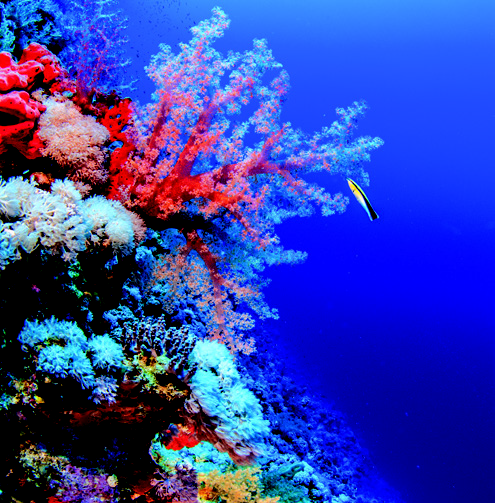
Oleh Prof. Dr. Zainudin Bachok, INOS
In one of the laboratory rooms at the Institute of Oceanography and Environment (INOS), wetsuits and SCUBA air compressors are neatly kept. There is a reason why INOS has them. These are used by its researchers when they dive underwater to conduct studies on coral reefs.
Coral reef research is one of the main activities carried out at the institute.
A coral reef, also known as the “rainforest of the sea,” is an important ecosystem in the ocean. It provides habitat for breeding and nursery grounds, food and shelter for marine organisms, and coastal protection.
Whereas the tropical rainforest is formed by plants, a coral reef is built by animals, an interesting fact that may surprise many people. Coral reefs are actually one of the largest biological structures on Earth.
The unique ecosystem is built by hard corals, living organisms that give a reef a three-dimensional structure. These hard corals are from the animal kingdom Animalia, and they have tentacles that can secrete rigid skeletons like humans and can grow.
One of the unique characteristics of these stony corals is that they are in a reciprocal relationship with tiny microorganisms known as symbiotic algae or “zooxanthellae.” The corals provide shelter for the algae, who live inside the coral tissues, and in return the algae provide food for the hosts. The algae help the corals to grow and provide them energy to build the coral skeleton, which eventually forms the basic framework of the ecosystem. A variety of coral growth forms then take place, such as massive, branched, encrusting, and several other forms.
In Malaysia, a country considered a hotspot for biodiversity especially marine organisms, there is about 4000 square kilometres of coral reef area, with various coral reef species and other marine organisms.
Coral Reefs Facing Threats
Unfortunately, coral reefs in the country have been facing a variety of threats due to human activities and climate change.
Overfishing, destructive fishing practices, land-based pollution, and coastal developments have severely affected the coral reefs. So has the increase in sea surface temperature, leading to massive coral bleaching. This is a state where corals expel the algae living in their tissues, causing the corals to turn white. When corals bleach, they are not dead yet, but continued stress created by the warm water may subject them to mortality.
Conservation of the coral reefs is critical for the survival of various marine species underwater and the livelihoods of millions of people on land who depend on these fragile ecosystems. Therefore, to develop a strategic conservation management, a comprehensive understanding of the fundamentals of coral reef distribution is required.
The Coral Reef Ecology (CORE) research group at the Institute of Oceanography and Environment (INOS) aims to monitor and assess the reef ecosystem in the South China Sea as well as study the coral biology and socio-economic aspects. With more than 20 members, the group seeks to provide better insights into the complex interactions that build the resilience of the reef ecosystem in the South China Sea.
Main Research Focuses
The main research focuses of the CORE research group include coral reef community structure, multiple stressors to the reef ecosystem, reef mapping, artificial reefs, coral reproductive biology and growth, stress response in corals, coral diseases, and socio-economic impact.
Coral reef studies by CORE researchers fall into three categories: broad-scale, medium-scale, and small-scale studies.
An example of broad-scale studies is mapping of marine habitat through acoustic and aerial surveys to obtain a large-scale assessment of the coral reef area. Mapping is conducted at three levels—the first level includes corals and non-corals, the second benthic, or bottom-of-the-sea life forms, and the third hard coral group type. This approach helps researchers to save a lot of time and resources.
Studies under the medium-scale category are more detailed, and one such example is coral reef community research, carried out to understand the ecological components of the ecosystem. In this type of studies, underwater video equipment is used to record and monitor important biotic and abiotic components in coral reefs. These two components form the ecosystems, the former comprising living things within an ecosystem, including plants, animals, and bacteria, while the latter consisting of nonliving things, such as water, soil, and atmosphere. How these two components interact is crucial in an ecosystem.
Small-scale studies are mainly concerned with ecology, physiology, and biogeochemistry of corals, and the focus of these studies varies, ranging from coral species to cellular levels. Normally assessed in studies under this category are fatty acid biomarkers, oxidative stress, and trophic levels, which are the positions marine organisms occupy in a food web, or the number of steps they are from the start of the food chain. All these assessments are made using different scientific measurements.
Field surveys at coral reef ecosystems involve SCUBA diving, and surveys are conducted using innovative applications that complement traditional ecological approaches with advancement in techniques. These include coral video transect (CVT) technique, stereo-fish underwater video (Stereo-FUV) system, multi-beam echo sounder (MBES), unmanned aerial vehicle (UAV), and ultrashort baseline (USBL) underwater positioning system.
Each of these applications is used for different purposes. For example, the UAV, or popularly known as drone, is used to capture satellite or airborne images with excellent spatial resolution. The MBES is used in spatial mapping of seafloor habitats.
Contributing to Coral Reef Research Community
As coral reef studies are continuously being conducted by the CORE group, the benefits resulting from the research activities are also enjoyed by the coral reef research community. One contribution from the CORE group is its advanced survey protocol invention. Where preceding methods are highly demanding, time-consuming, and suitable for archiving purposes, the new method of using digital waterproof camera, which underwent thorough scientific analysis, optimization techniques, and field testing, makes coral surveys more affordable and user-friendly.
The Coral Video Transect (CVT) technique, a self-developed standard operating procedure by the CORE group, is another method to use for reef site surveys beside the conventional methods. Using the new method has enabled the group to obtain data that provide a very important overview of the current reef condition regionally.
The CVT method has become a major achievement after being officially recognized by the goverment as a better alternative survey method in the country.
The CORE team also works closely with other agencies. The team has collaborated with the Malaysia Marine Park to produce a new indexing system to measure and monitor coral health. Four dimensions of Coral Resilience Index were jointly developed based on coral cover, fish, invertebrate, and plant presence in the reef areas. This indexing system is now being used to assess coral health nation-wide, to serve as a baseline assessment on coral community structure. This is crucial for identifying reef areas with known coral species susceptible to stress conditions.
The condition of almost all coral reefs in Malaysia is up to date. The team is creating a new indexing system to measure and monitor coral health, which is essential for the conservation and management of marine biodiversity. Long-term monitoring and integrated ecosystem observations of coral reefs provide important data that help coastal residents and coastal and marine management authorities understand the health of reefs, their dependence on their health and well-being, and the economic and social consequences of reef decline.
Coral reef research will remain one of the main activities at INOS as the institute seeks to help in coral reef conservation.
When wetsuits and SCUBA air compressors are missing from one of the laboratory rooms at the institute, that means the CORE group is using them underwater to conduct coral reef studies.
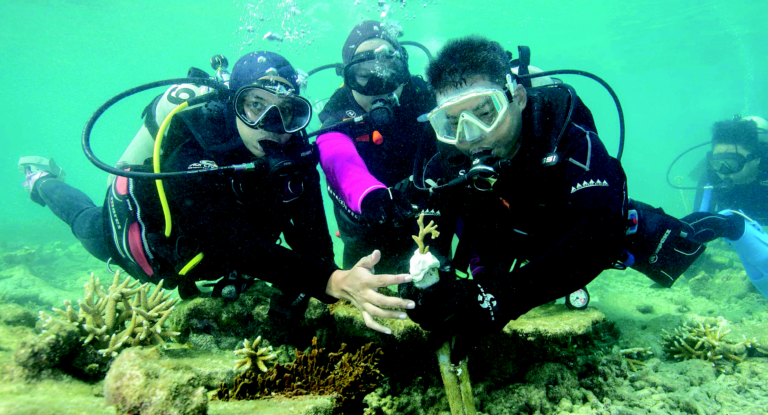
A group of divers epoxying a coral fragment. Coral transplantation involves transplanting a coral from a place with inhospitable conditions to a place where it has a higher chance of thriving.
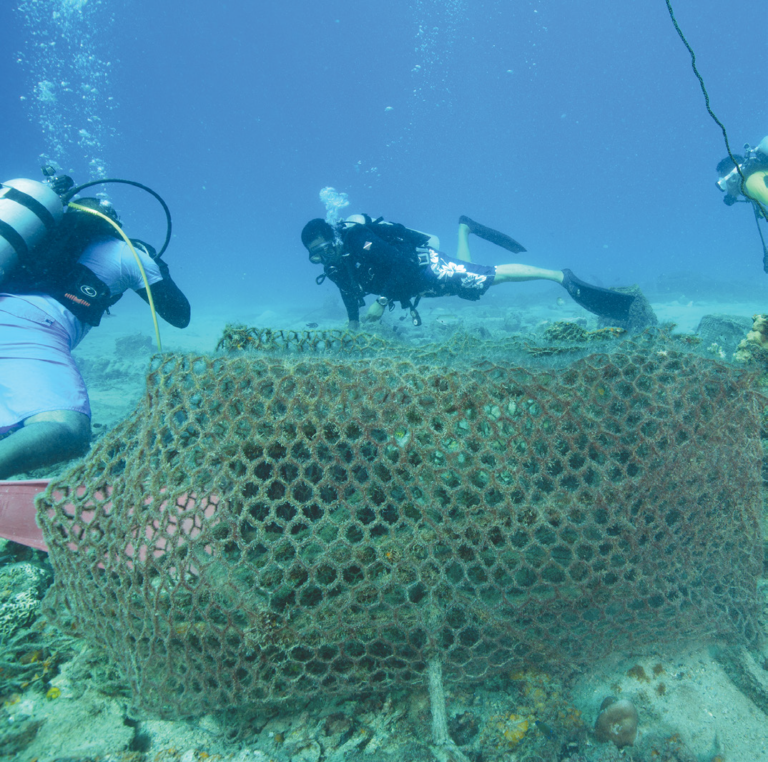
Ghost nets, also known as The Abandoned, Lost, or Otherwise Discarded Fishing Gear (ALDFG), can become entangled in fish, dolphins, sea turtles, sharks, dugongs, and other creatures, including occasionally human divers

“Christmas tree worm” is the common name for marine worms that live on tropical coral reefs. Each worm has two brightly colored crowns protruding from its tubular body. They are important for the health of coral reefs and help protect the corals from invasive starfish while preventing the corals from being overgrown by algae.
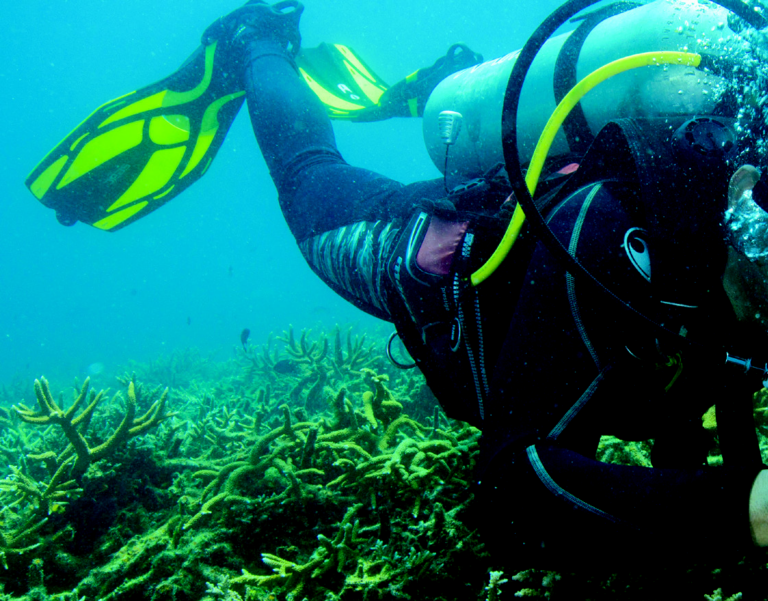
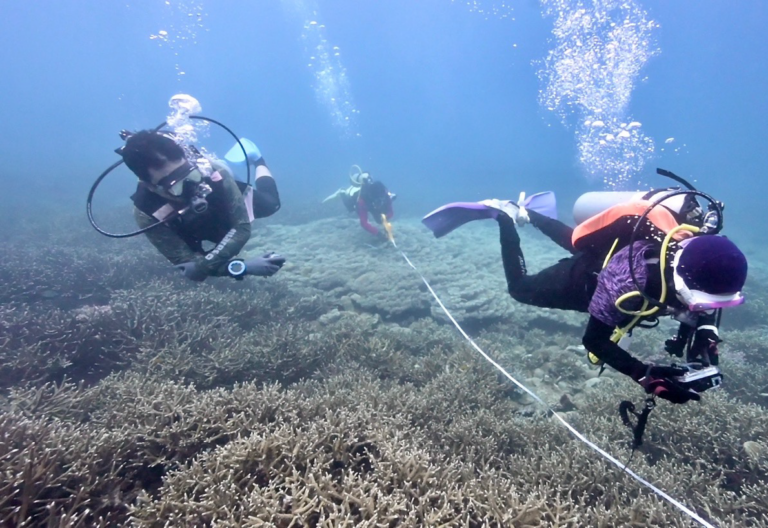
The coral video transect method (CVT) consists of a field survey with a video camera along a line of fixed length, with the registered images subsequently analyzed with a computer
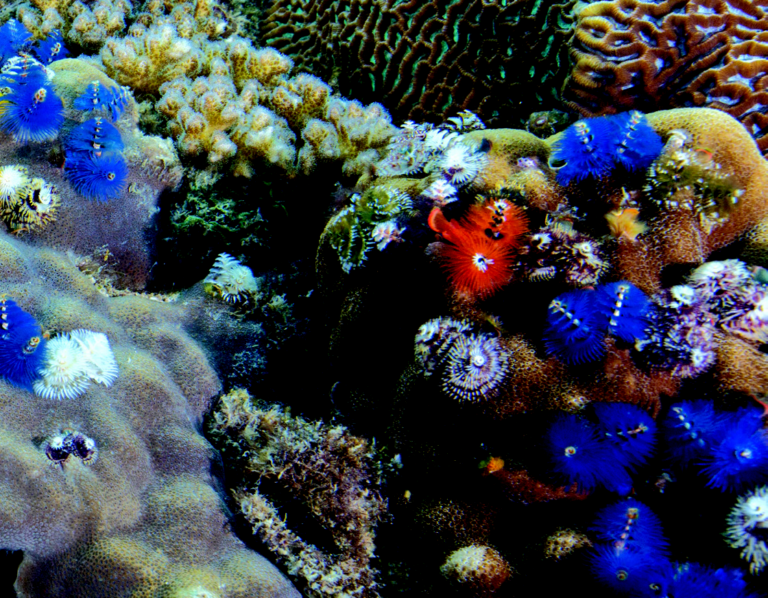
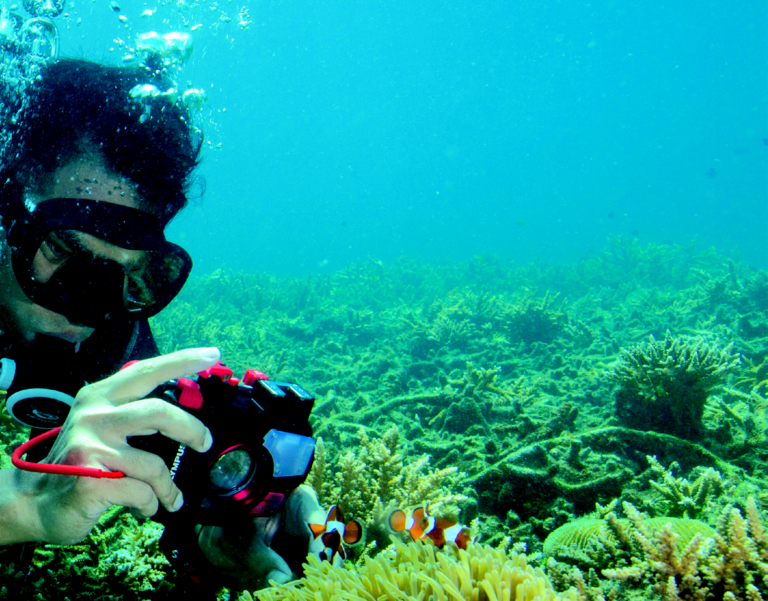
When diving, you can move freely underwater and have the feeling of being part of marine life. Underwater photography is very useful when scientists need to study objects on the seabed over time.
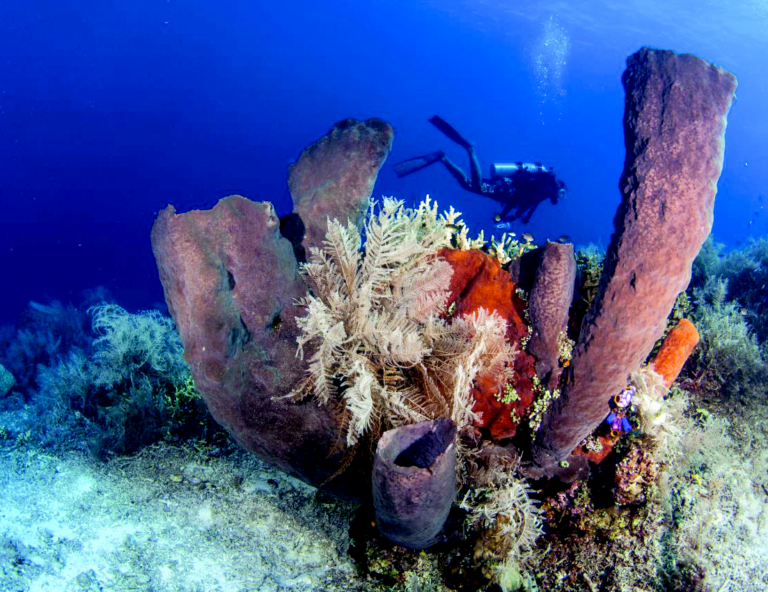
Coral surrounded by marine sponges. Sponges are important inhabitants of coral reef ecosystems. A diverse sponge population can influence the water quality of the reef, as the sponges filter water, collect bacteria, and process carbon, nitrogen, and phosphorus.

Copyright © INOS | Institute of Oceanography and Environment | Universiti Malaysia Terenganu | 2024. All rights reserved.